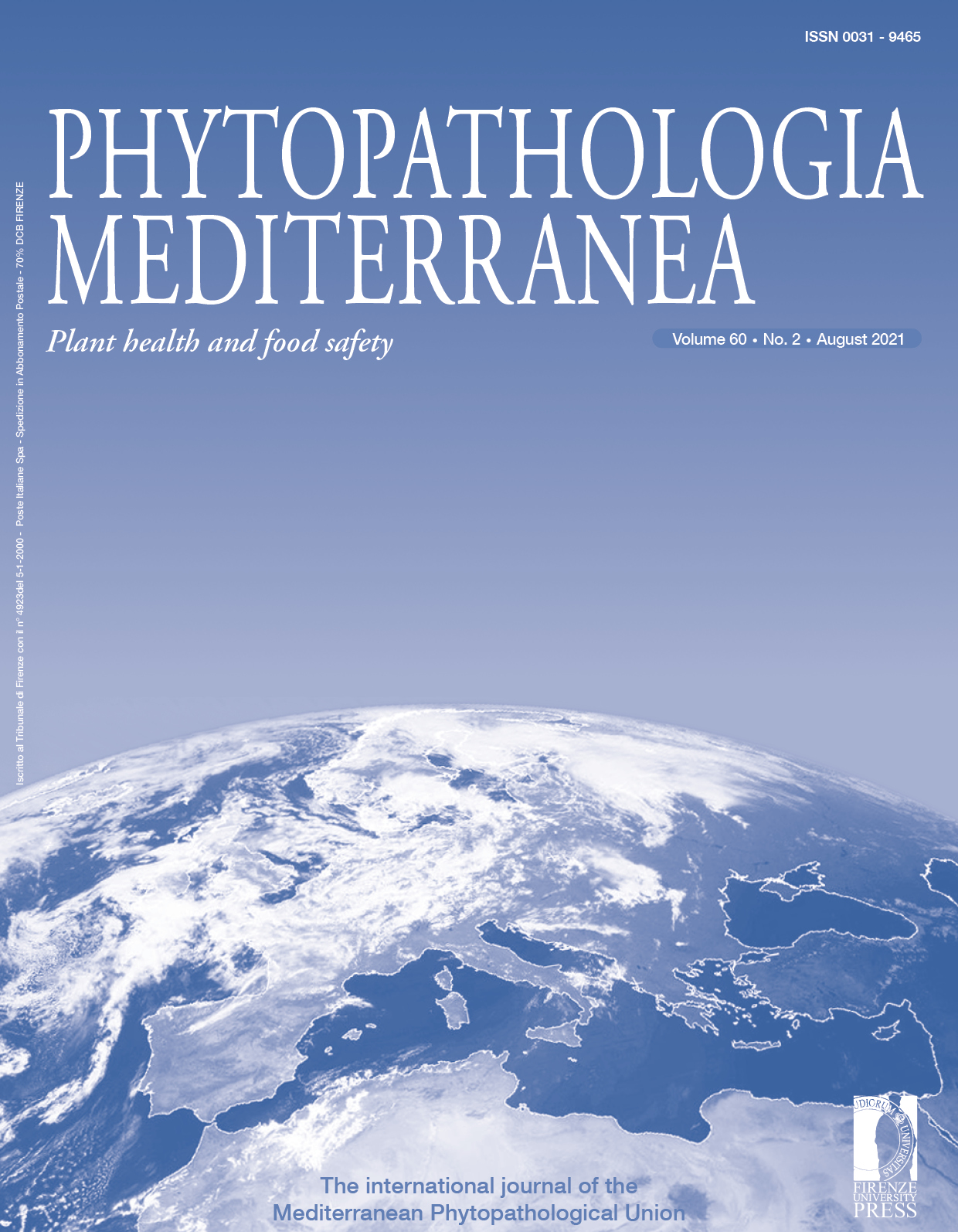Published 2021-09-13
Keywords
- Antioxidant systems,
- ascorbic acid,
- glutathione,
- membrane lipid peroxidation,
- redox state
- hydrogen peroxide ...More
How to Cite
Abstract
Physiological features were examined of a 20-year-old Vitis vinifera ‘Italia’ table grape vineyard cropped in Apulia, Italy. Healthy vines with no foliar symptoms and any indications of wood or berry alterations, vines with natural wood infections by Phaeoacremonium minimum (syn. P. aleophilum) and Phaeomoniella chlamydospora showing brown wood streaking symptoms, and vines naturally infected with P. minimum, P. chlamydospora and Fomitiporia mediterranea with brown wood streaking and white rot symptoms, were surveyed. Bleeding xylem sap, collected at bud-break from healthy vines showed the greatest total ascorbic acid level, while vines with brown wood streaking and white rot had the greatest viscosity coefficient, glutathione concentration, and plant growth regulator activities. Compared to healthy vines, leaves of wood affected vines, sampled during the unfolded leaf, fruit setting, cluster closing and bunch ripening vine growth stages, had reduced fresh and dry weights, total chlorophyll concentrations, and increased leaf surface area. Low ascorbic acid and reduced glutathione concentrations, weak redox state, and moderate levels of dehydroascorbic acid and oxidized glutathione were also detected in these vines. Analyses also detected reduced activities of dehydroascorbate reductase, ascorbate free radical reductase and glutathione reductase in diseased vines. The cell membrane damage, associated with lipid peroxidation, was coupled with high hydrogen peroxide concentrations. These changes could contribute to the cell death of leaves and foliar symptom development. The ascorbate-glutathione cycle supports grapevine susceptibility to Esca complex-associated fungi.







